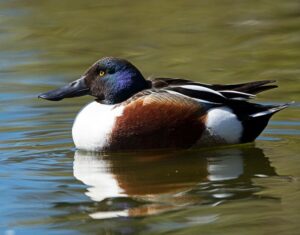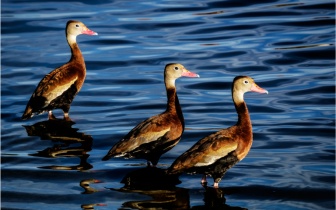Guanajuato has become an important destination for migratory birds: SMAOT
News Category: News and General Discussion
-
To date, Guanajuato has recorded 430 species of birds, of which 193 are migratory, representing 45% of the total number of species, and the Laguna de Yuriria Natural Protected Area is one of the most influential points for their arrival, informed Isabel Ortiz Mantilla, head of the Ministry of Environment and Territorial Planning (SMAOT), in the framework of World Migratory Bird Day, which is celebrated on May 13 in spring and October 14 in autumn.
Due to the fact that out of every ten birds registered in the state, four are migratory, the State Government, through the Secretariat of Environment and Land Management (SMAOT), reaffirms its commitment to the conservation of ecosystems that allow the preservation of the species they shelter.
Isabel Ortiz Mantilla assured that the conservation and biological monitoring actions carried out in the State’s NPAs with the support of park rangers are essential to continue preserving Guanajuato’s natural wealth through its biodiversity.
Migratory birds of almost all bird families have been recorded in the state’s Natural Protected Areas (NPAs). Migratory waterfowl are very popular and attractive, for example, the duck family (19 species in the PNAs), shorebirds (29 species), herons (11 species), and gulls (9 species).
Most bird families have at least one migratory species.
Water is fundamental to life on our planet. The vast majority of migratory birds depend on aquatic ecosystems during their life cycles. Inland and coastal wetlands, rivers, lakes, streams, marshes, and ponds are vital for feeding, drinking, or nesting, and also as places to rest and refuel during their long journeys.

The most common migratory birds to observe are those that migrate in winter. These species breed in the north of the continent (from Alaska and Canada to the north of Mexico) and spend the winter in our territory, some reach Central America. For example, the white pelican (Pelecanus erythrorhynchos) breeds in Canada and the northern United States and migrates to Mexico and Central America.
In the ANP “Laguna de Yuriria and its zone of influence”, pelicans have been found tagged in the State of Idaho, USA, and spend the winter in the Yuriria Lagoon, traveling a total of approximately 5800 kilometers round trip.
In 2023, World Migratory Bird Day is celebrated on May 13 in spring and October 14 in autumn. This year’s conservation theme is about the importance of water in sustaining the lives of migratory birds.
To migrate, birds must face impressive physical and physiological challenges, so they have adapted to become more resilient and tolerant in their ecological and metabolic requirements, modify their behavior, and can feed on a wider variety of resources.

In their hibernation sites, it is common to see them associated with forming groups or mixed bands composed of resident species and protecting them from predators. They play an important role in the ecological dynamics of the sites they visit, as they are important predators of insects and vertebrates, seed dispersed, and pollinators of many plants.
World Migratory Bird Day is an annual awareness campaign that highlights the need to conserve migratory birds and their habitats. It has a global reach and is an effective tool to help raise global awareness of the threats migratory birds face, their ecological importance, and the need for international cooperation to conserve them.
-


Leave a Reply